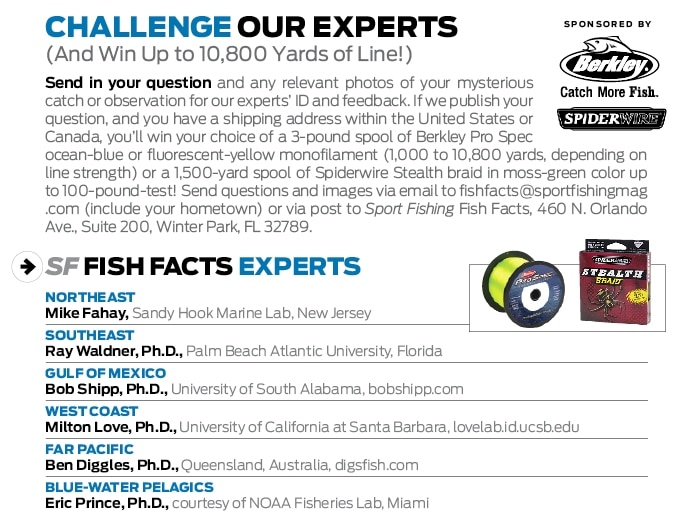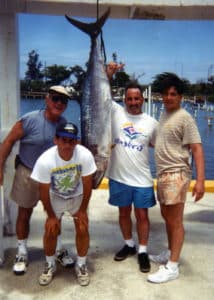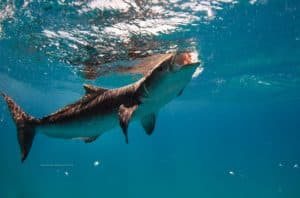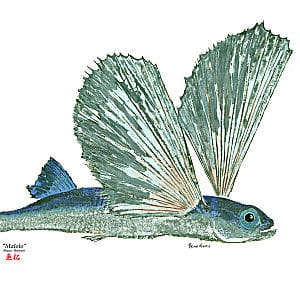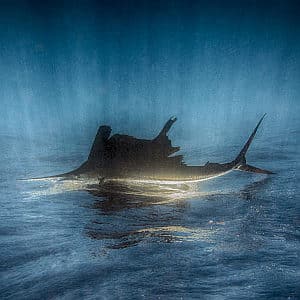In each issue of Sport Fishing magazine, a panel of five international expert ichthyologists identifies unusual and often amazing fishes in photos submitted by readers. Here you’ll find the I.D. and information for interesting catches from far and wide.
GROUPER IN GARNET
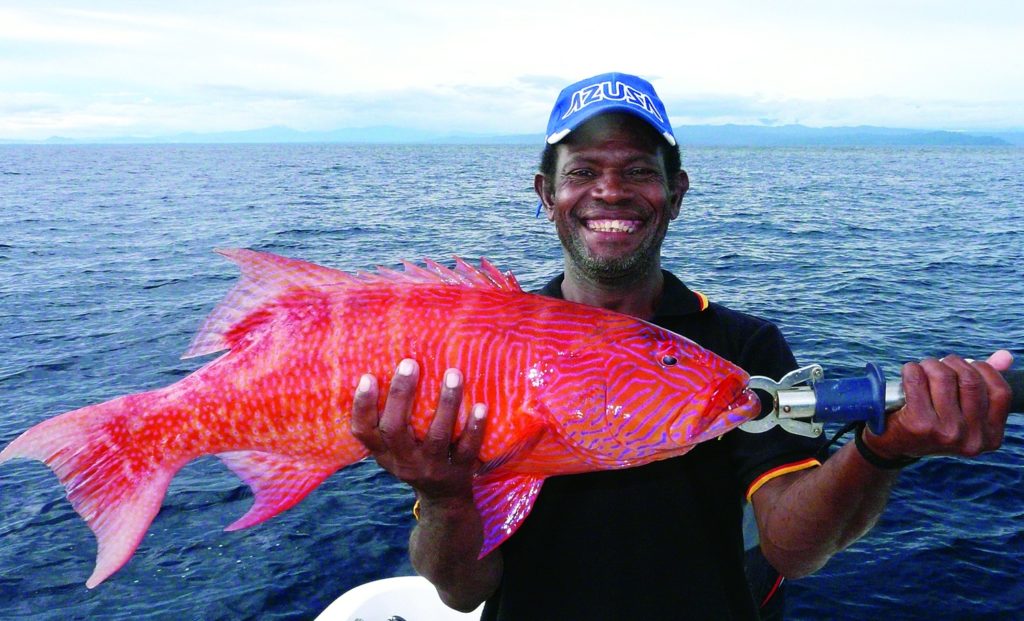
John [last name unavailable]
Vessi Island, Papua New Guinea John from Papua, New Guinea
ANSWER: What you’ve caught there is a very big highfin coral grouper, Plectropomus oligacanthus, also known as highfin coral trout or vermiculate coral trout. It’s one of the more colorful groupers within the family Serranidae and can be encountered in many coral-reef areas of the Western Pacific, including the Philippines, Indonesia, Papua New Guinea, the northern Great Barrier Reef and throughout Micronesia. This species inhabits deep drop-offs and steep channel slopes down to depths of around 500 feet, but in comparison to other coral groupers, it’s a rare species, and very little has been published on its biology. Like other coral groupers, the highfin feeds on crustaceans and fish and is thought to change sex from female to male at a certain size. Female specimens have been found to mature at around 18 inches, while all the largest specimens tend to be male. Highfin coral grouper have been recorded as growing only to around 30 inches long, which is about as big as the one you’re holding there. They are reputedly a fantastic-eating fish, but larger specimens from some regions have occasionally been implicated in cases of ciguatera poisoning.
— Ben Diggles
SILVER BULLET
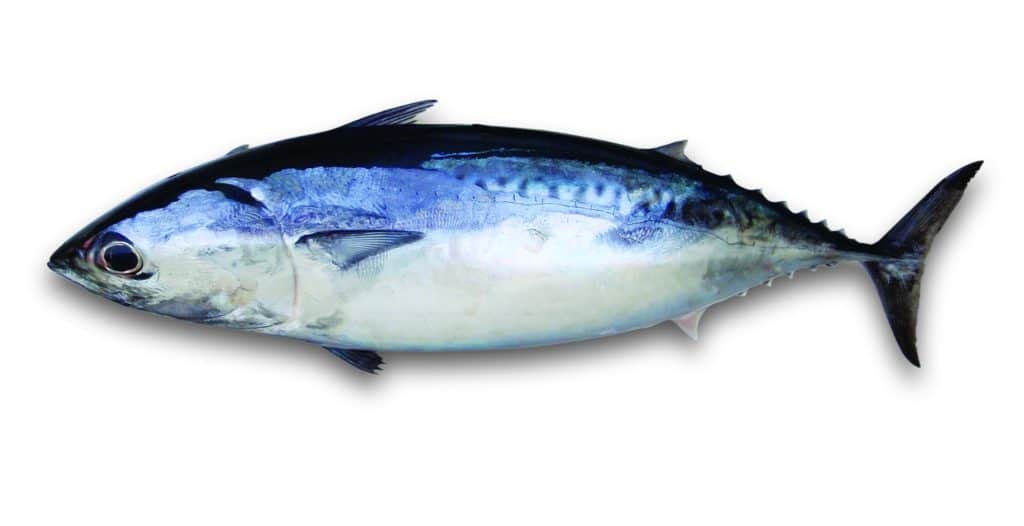
Bob Sinclair
Virginia Beach, Virginia Bob Sinclair
ANSWER: Good call, Bob. That is indeed a bullet mackerel (also called bullet tuna), Auxis rochei. This species is found worldwide in tropical and temperate waters, growing to a maximum length of around 20 inches. It’s fairly common throughout much of its range, especially in coastal and insular waters. In the past, the bullet mackerel was often confused with the somewhat similar frigate mackerel, A. thazard. Two subspecies of bullet mackerel are currently recognized, this and another from the eastern Pacific. Although sometimes sold commercially, unlike many other members of the family Scombridae (tunas and mackerels), the bullet mackerel is not considered to be especially desirable table fare. Its flesh is reportedly reminiscent of little tunny, Euthynnus alletteratus (aka bonito and false albacore) — dark and strong-tasting.
— Ray Waldner
GRUNT WORK
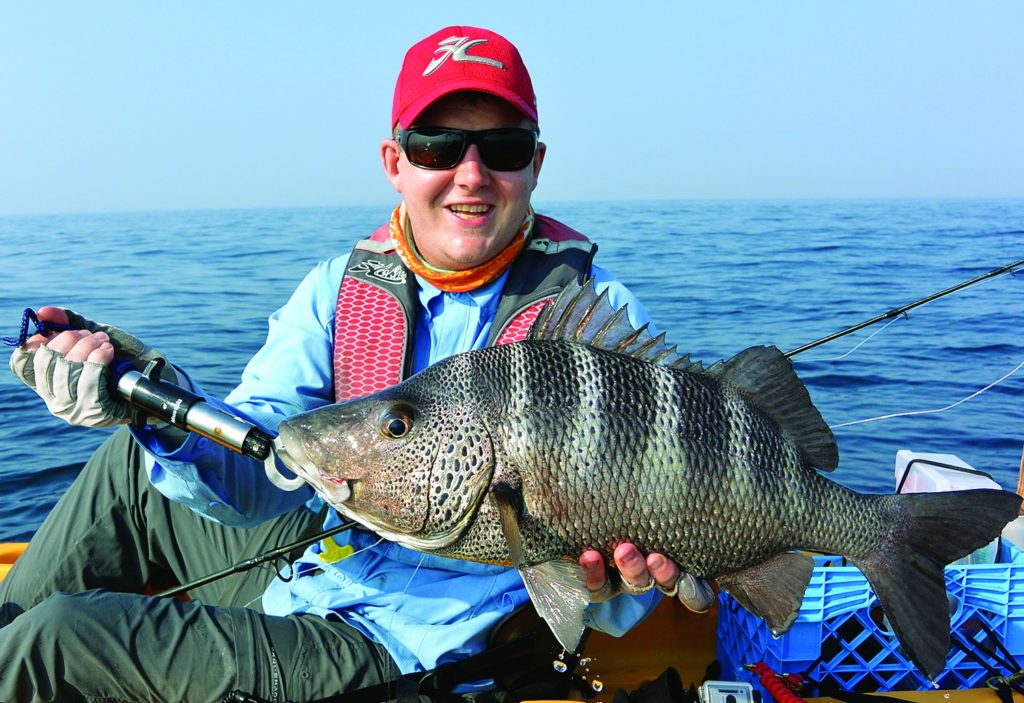
Dan Andre Aarsvold
Vormedal, Norway Dan Andre Aarsvold
ANSWER:
Hey, Dan, that husky fish with the bars, freckles and elongated head is the greybar grunt, Haemulon sexfasciatum. As you can see from your catch, this is one of the beefier grunts in the eastern tropical Pacific, reaching a length of 28 inches. They range from Bahia Magdalena, on Baja’s southern Pacific coast and the Gulf of California, south to Ecuador, including the Galápagos. This species may be found in the subtidal zone to depths of about 100 feet. Greybars tend to form large aggregations near rocky reefs by day, with individuals dispersing just before sundown to feed over sand at night, when they target benthic creatures such as shrimps, crabs and brittle stars. During daylight, you can often spot where one is feeding by looking for the puffs of sand as it roots about. I have seen a number of other fishes, including jacks and trevallies, accompanying greybars, waiting for something edible to pop out of the sand. From the Gulf of California southward, greybars are an important species in commercial artisanal fisheries.
— Milton Love
FUNNY BONE
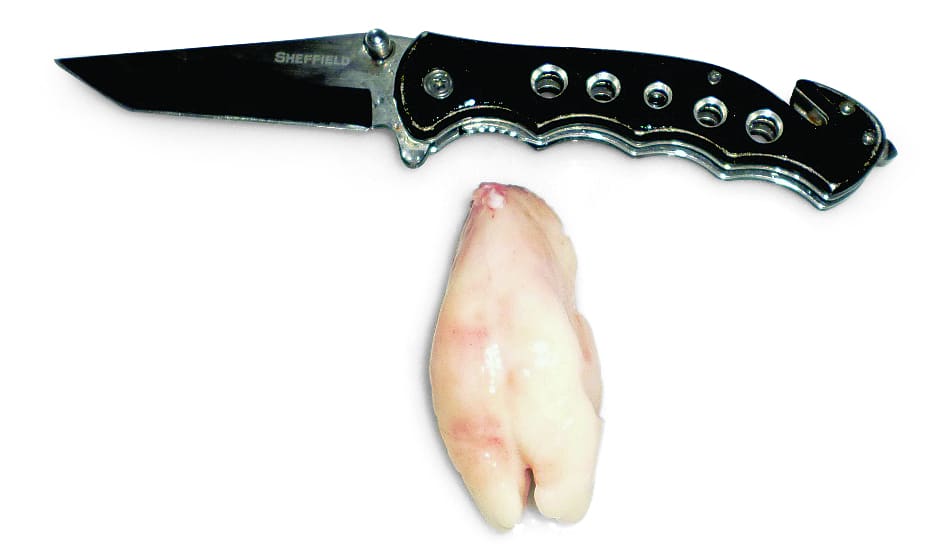
Buddy Toepfer
Corpus Christi, Texas Buddy Toepfer
ANSWER: I got the lowdown on this from William Smith-Vaniz, the leading carangid (jack) expert. That swollen condition of the bone is called *hyperostotic. It seems to be characteristic of many jacks (and other groups of fishes). In jacks, the bones are swollen in shapes characteristic to each species (so all individuals in a species will have hyperostotic bones of the same shape). The reason for the swelling is unknown, but because all individuals of a species have them, the condition does not appear to be detrimental.
— Milton Love
STOCKY HAWKY
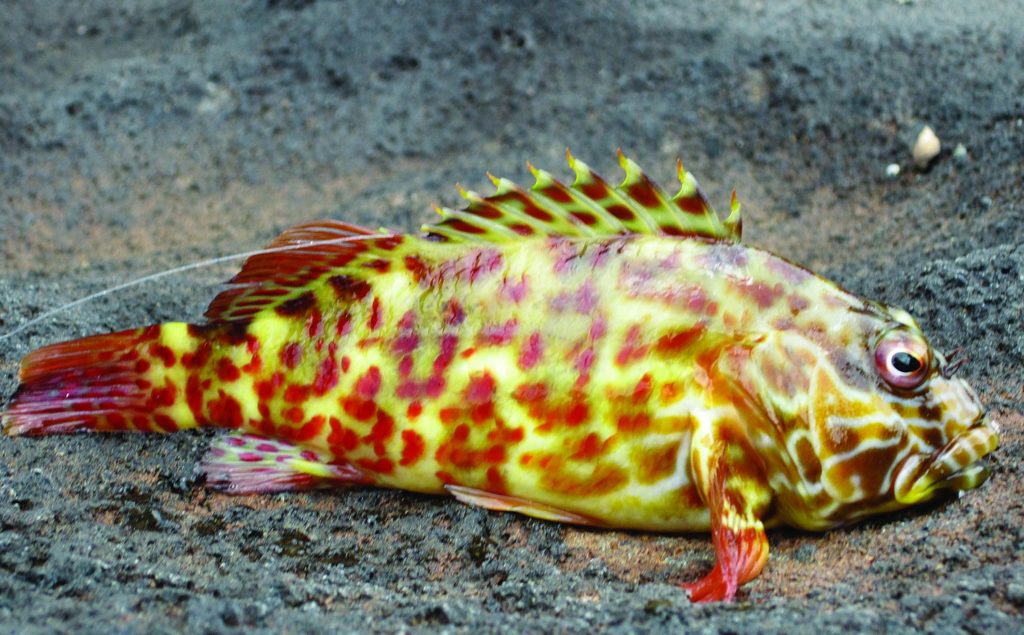
Mark Stiehl
Jacksonville Beach, Florida Mark Stiehl
ANSWER:
Looks like you caught a nice-size stocky hawkfish (Cirrhitus pinnulatus). This species is related to the giant hawkfish (C. rivulatus) — previously featured in Fish Facts — but the stocky hawkfish grows only to a maximum of around 12 inches long, about half the length of the giant hawkfish. Also known as the marbled hawkfish or in Hawaii as O’opu kai, this species occurs throughout the Indo-Pacific region, from the Red Sea and East Africa to the Marquesas Islands, north to Japan, and as far south as the Kermadec Islands, north of New Zealand. Stocky hawks are normally found along shallow reef-strewn shorelines, often in less than 10 feet right in the wave-surge zone. It’s an aggressive little predator, feeding mainly on crabs but also small shrimp and fish as well as echinoderms. Though their strong spines can make handling them difficult, they’re not poisonous, and people commonly eat them.
— Ben Diggles
FROM THE FISH FACTS ARCHIVES: SPANISH MACKEREL (Scomberomorus maculatus)
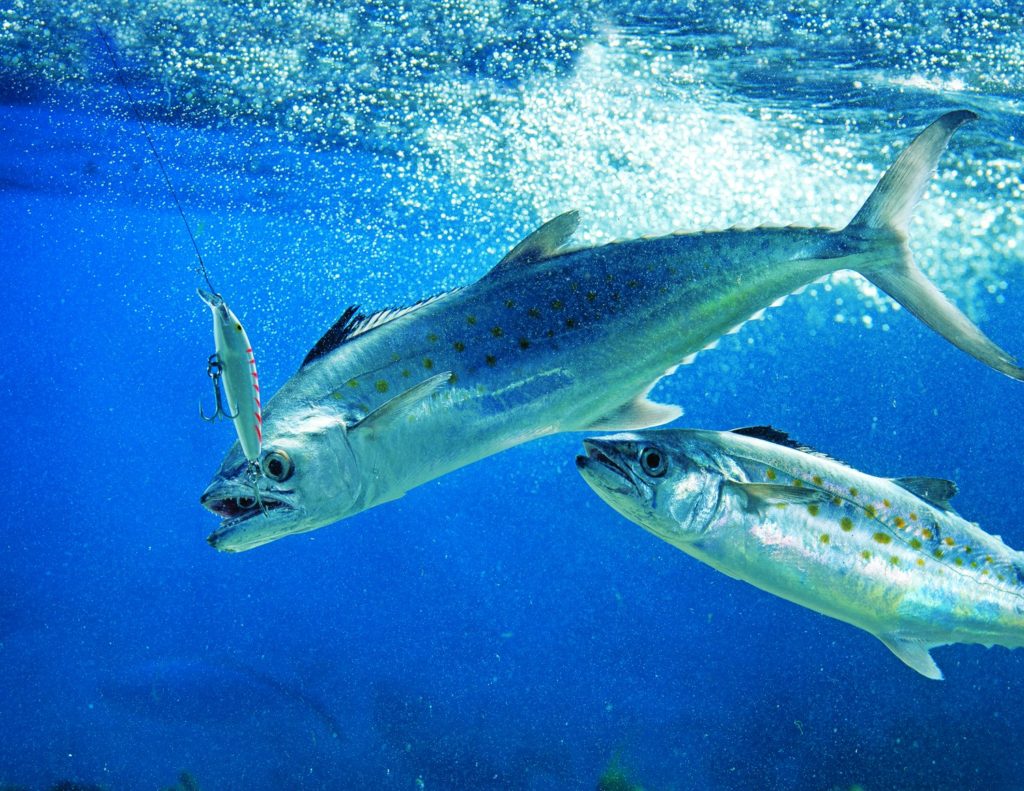
Send us YOUR strange or surprising catches!
